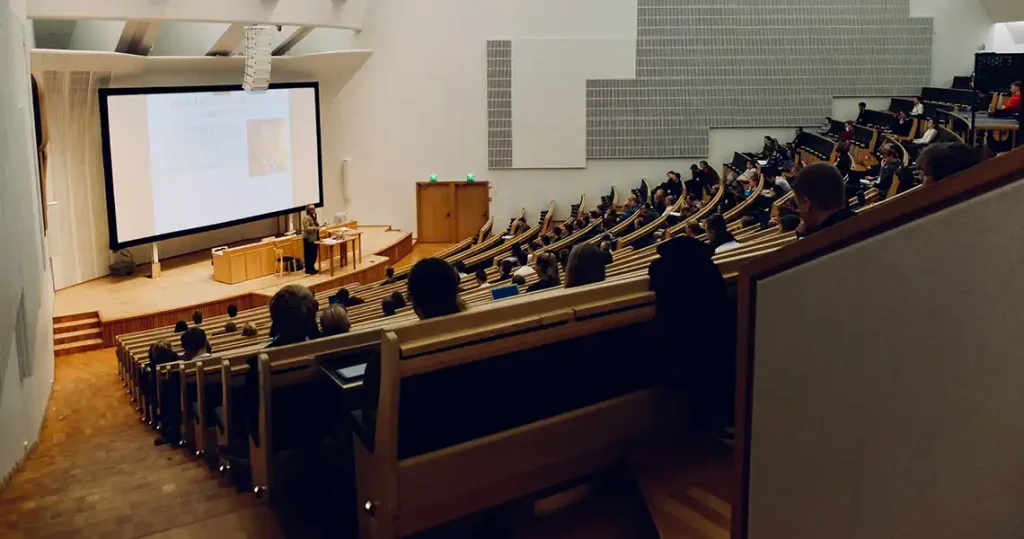
Sample Course Description
Judaism, Christianity, and Islam: Interrelated Religious Traditions
The course is designed to introduce students from diverse academic disciplines as well as cultural and religious backgrounds to an analysis of the complex interrelatedness of Judaism, Christianity, and Islam. The aim of the course is to present Judaism, Christianity, and Islam as living traditions whose historical origins, current interactions, and future development will continue to shape the spiritual, cultural, political, and economic aspects of human civilization in the 21st century.
Key objectives
Key objectives of the course are to foster critical thinking, cross-cultural engagement, and the ability to discern recurring patterns in diverse contextual settings. The goal is for the students to examine each religious tradition objectively and with academic rigor. This includes the study of sacred texts, the critical examination of historical evidence, the analysis of key religious teachings and their political, sociological, and cultural impact both past and present.
In addition, the course requires students to acquire a solid grasp of the internal ethos of each of the three traditions.
Entry points
Judaism, Christianity, and Islam are each multifaceted religious traditions of a vast scope. For a comparative introductory course, it is most helpful to use a specific entry point which enables students to explore common features as well as clearly differentiate between the three traditions.
Such an entry point are the scriptural narratives of Abraham, Sarah, and Hagar whom Judaism, Christianity, and Islam consider as iconic foundational figures. The primary focus of the course not on the historical or archeological debate about Abraham and his family. Rather, it is the exploration, analysis, and critical examination of how the Abrahamic family narratives originated, were modified throughout history in various religious, cultural, and political contexts, and continue to exert a powerful influence on the self-understanding and the actions of half the world’s population.
Part 1: Comparative literary analysis
The first part of the course is therefore dedicated to an in-depth comparative literary analysis of the respective scriptural narratives of Abraham’s family. At the same time, students explore and evaluate how each of the three traditions has distinctly re-shaped and re-purposed its foundational Abrahamic narrative in subsequent historical contexts. As a result, the students discover how the Abrahamic family narrative in each tradition bears many resemblances to the other two and at the same time embodies and exemplifies the distinct theology, ethics, and ritual practice of the specific tradition.
Part 2: Overview of origin, doctrine, & practices
Building on this introductory understanding of each of the three monotheistic traditions, the course then continues with a more comprehensive overview of the origins, history, key doctrines, practices, and contemporary manifestations of Judaism, Christianity, and Islam.
Part 3: Case studies
Equipped with this foundational knowledge, the students then undertake several historical case studies to explore how members of the three religious traditions have and are interacting with one another both in conflict and in more collaborative ways.
Case studies exemplifying the former are the Christian Crusades and the Israeli-Palestinian Conflict. Representing the latter are Medieval Spain under Muslim Rule, the West-East Divan Youth Orchestra, jointly founded by Daniel Barenboim and Edward Said, and the Bridge over the Wadi School, a bilingual educational experiment for Jewish and Palestinian children in Israel.
A key task in the analysis of each case study is to distinguish and disentangle genuine religious factors from political, cultural, or economic influences. In addition to analyzing historical interactions of the three religious traditions through case studies, the course also introduces students to religious and philosophical resources for overcoming adversarial postures of the past.
Final research paper
An important supplement to the study in the classroom is the opportunity for students to organize and participate in visits to Jewish, Christian, and Muslim houses of worship. These visits afford the participants an experiential learning component which they process and analyze in a reflection paper.
All students finally apply the knowledge and insights they acquired in the course in a research paper. In addition to the requirement to choose a topic which includes a comparative aspect, students are encouraged to select a subject that also relates to their main academic discipline.
The course culminates in a forum in which three scholars of Judaism, Christianity, and Islam engage in a Trialogue panel discussion to explore the commonalities and differences on a key issue of common concern.